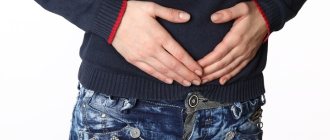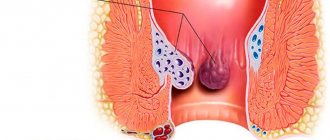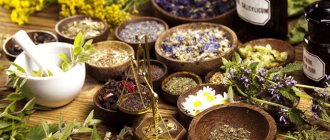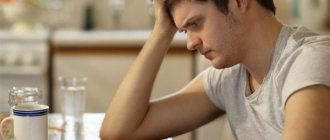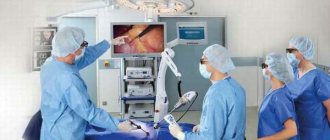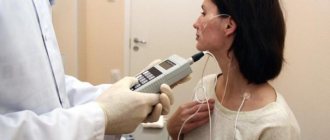To understand how to restore the pancreas, you need to understand the mechanisms that lead to its damage. This organ performs 2 main functions. Glandular tissue produces enzymes necessary for digestion. And in beta cells, insulin is synthesized (this is a hormone necessary for the absorption of glucose by tissues). The ability to normalize these functions varies. It is also very important how badly the gland tissue is damaged, and what the main factor was that caused the disease.
Can the pancreas heal itself?
The pancreas is located in the upper abdomen, located slightly below the stomach. Its head is facing to the right, towards the liver, and its tail is facing to the left. The pancreatic duct passes through the entire gland, through which digestive juice is secreted into the lumen of the duodenum.
The cells of the pancreas, responsible for the production of enzymes and hormones, are highly differentiated. They are formed in the child in utero and, by the time the gland is formed, they lose the ability to divide. Therefore, their loss as a result of death is irreversible.
But during illness, cells may not die, but be damaged. If the action of the damaging factor has ceased, regeneration processes are launched at the cellular level. And despite the fact that the replenishment of dead pancreatocytes does not occur, the remaining ones can begin to work “in full force” again. Therefore, it is quite true that the pancreas is capable of self-healing.
How quickly or slowly the functioning of the pancreas will normalize depends on the state of the body, as well as on the mood of the patient himself. Recovery can be helped by following diet and other doctor's recommendations. Sometimes, if a large number of cells have died, it is impossible to completely restore the functioning of the organ, and enzymatic or insulin deficiency develops, requiring maintenance therapy for life.
How to check your pancreas at home?
Self-diagnosis, as well as self-medication, especially of pathologies of the pancreas, is not recommended, since all diseases of this organ have severe complications and can be aggravated by improper use of medications. In order not to worsen the condition, you should consult a doctor at the first signs of illness. Diseases of the pancreas, if not detected and treated in a timely manner, can proceed initially, like any pathology of the digestive tract, and manifest themselves:
- abdominal pain of varying localization and intensity,
- dyspepsia in the form of nausea, vomiting, bowel dysfunction (constipation or diarrhea), poor appetite,
- flatulence,
- belching.
Therefore, it is important to accurately determine the pathology so that the treatment taken is adequate.
At home, you can only focus on your well-being and minor symptoms that may bother you during the period of unstable remission of pancreatitis, if this diagnosis has already been verified and the patient has been repeatedly treated for this reason. It is necessary to pay attention to the general condition, appetite, stool (it may be mushy, fatty, or periodically caused by flatulence or constipation). Sometimes during the period of remission, when active treatment is not prescribed, the following may bother you:
- belching,
- dry mouth,
- decreased appetite,
- nausea after eating fatty, fried, spicy or smoked foods,
- over time – loss of body weight.
In such cases, it can be assumed that these complaints are associated with pancreatitis.
Recovery after pancreatitis
Recovery of the pancreas after pancreatitis is possible if the disease is diagnosed in the early stages. This disease is caused by inflammation due to the penetration of microorganisms from the intestines into the gland duct. Giardia parasites may also be the cause.
Sometimes pancreatitis develops as a result of cholecystitis. The pancreatic duct opens into the intestinal lumen through the same opening as the bile duct. Therefore, when the gallbladder becomes inflamed, microbes can spread to the pancreas.
Pancreatitis occurs in acute or chronic form. They are quite different in nature. Therefore, recommendations for normalizing the functioning of the pancreas in acute and chronic pancreatitis differ. But in both cases you should not count on a quick effect.
How to restore pancreatic function in acute pancreatitis?
This disease usually develops suddenly, is severe, and must be treated in a surgical department. The patient develops severe pain in the left hypochondrium, nausea, vomiting, bloating, and fever.
The reason may be eating a large amount of “heavy” food: fried, fatty, spicy, sour. Sometimes acute pancreatitis develops as a result of alcohol damage. One of the most severe forms of acute pancreatitis is pancreatic necrosis, which most often develops against the background of heavy drinking.
In the mechanism of development of acute pancreatitis, own enzymes play an important role. Food or alcohol, acting as an irritant, increases the secretion of pancreatic juice with increased viscosity. If its outflow is obstructed due to spasm or increased pressure in the duodenum, it stagnates inside the gland itself, starting the process of “self-digestion” of the tissue.
This condition is very serious. To bring the patient out of it, in the initial period a complete refusal to eat for several days is necessary. A small amount of warm water is allowed. This is necessary so that the gland temporarily stops producing pancreatic juice. For the same purpose, special drugs from the groups of M-anticholinergics, antispasmodics, and enzyme blockers are prescribed. If part of the pancreas is destroyed, sometimes it is necessary to undergo resection (removal of part) of the pancreas to remove necrotic areas.
With a successful course of acute pancreatitis, the patient’s diet gradually expands, first through the most gentle diet. Then the patient is gradually transferred to the general table. In order for recovery after acute pancreatitis to be successful, you need to eat fractionally and in small portions. This helps the pancreas - it stimulates the normal production of pancreatic juice and prevents its stagnation.
There is another form of acute pancreatitis - drug-induced. It can develop while taking antibiotics, diuretics, blood pressure pills from the group of ACE inhibitors and some other drugs. Clinical manifestations are similar to ordinary pancreatitis. But recovery requires, among other measures, discontinuation of the drug whose use caused the disease. Sometimes drug-induced pancreatitis occurs in a chronic form.
Does the pancreas recover during chronic pancreatitis?
Chronic pancreatitis is more mild, but its consequences are no easier. This is due to the fact that it can manifest itself for a long time with minimal symptoms (belching, heaviness in the abdomen, aerocolia - accumulation of gas in the intestines). Existing inflammation has a destructive effect on gland tissue.
Sometimes the disease causes exacerbations, occurring in the form of an attack of severe pain with nausea and vomiting. These attacks resemble acute pancreatitis, but are not accompanied by a massive release of enzymes into the pancreatic tissue.
The mechanism of development of acute pancreatitis is similar to chronic pancreatitis, but the damaging factors act weaker and for a longer period of time. Therefore, when symptoms appear, pronounced changes in the pancreas of a diffuse nature are often detected. To seriously talk about recovery from chronic pancreatitis, you need to know the main causes of the disease:
- Poor nutrition. Excessive consumption of fatty, spicy, spices and irritating foods leads to the production of a viscous secretion that clogs the ducts.
- Smoking - in addition to also having an irritating effect, can cause spasm of smooth muscle cells in the walls of the excretory ducts.
- Chronic cholecystitis - due to the entry of infected bile into the pancreatic duct.
- Stress and functional impairment. By disrupting the motility of the gastrointestinal tract, they can lead to difficulty in the outflow of pancreatic juice.
- Chronic alcohol abuse.
Elimination of these factors will create conditions for pancreas restoration. The earlier the problem is identified, the better recovery you can expect. It is important to completely give up bad habits, as well as any excess in food. Some foods should be completely excluded from the diet. For functional disorders, special medications are sometimes prescribed (Iberogast, Trimedat, Duspatalin, No-Shpa).
There are forms of pancreatitis that are practically irreversible. This is an autoimmune and hereditary pancreatitis, as well as developing against the background of cystic fibrosis. But even in these forms, compliance with dietary and other doctor’s recommendations is necessary so that the patient can live a normal life for as long as possible.
Causes of organ disease
Inflammation of the pancreas is called pancreatitis, and this is where health problems begin. Today, the disease has become noticeably younger, as its symptoms are found even in schoolchildren. It is known that inflammatory processes can be provoked by acquired and hereditary causes. But the main prerequisite remains incorrect eating behavior - overeating, abuse of unhealthy foods with a high fat content, and alcohol-containing drinks. When the pancreas is sick, the signs of the disease are severe pain, which only intensifies over time, bringing real suffering to the patient.
What factors contribute to the development of pathology:
- any intoxication - food, alcohol, poisoning as a result of taking antibacterial, hormonal, diuretic drugs;
- improper diet, untimely eating, gluttony and malnutrition;
- anatomical defects in the development of the gland, tumor;
- hormonal changes;
- physical injuries to internal organs;
- unfavorable environmental conditions;
- disorders in the endocrine system;
- vascular and heart diseases;
- unsuccessful operations;
- obesity, overweight;
- the presence of parasitic organisms, helminths;
- liver disease, gallstones, poor bile flow;
- infections, bacterial and viral, including liver inflammation (hepatitis of various etiologies), mumps.
The acute form of pancreatitis is extremely dangerous, comparable, perhaps, only to the acute stage of cholelithiasis and appendicitis. It can lead to unpredictable, serious consequences, degenerative processes spreading to nearby tissues, and dystrophic disorders. At the same time, the gland begins to “eat” itself.
This condition is caused by:
- diabetes mellitus;
- malignant oncology;
- damage to organ tubules during surgical treatment;
- liver pathologies;
- a viral disease such as herpes;
- long-term unbalanced diet;
- some diagnostic procedures with the introduction of radiocontrast agents.
But in the first place is uncontrolled alcohol consumption and mineral deposits in the bile ducts.
Chronic pancreatitis occurs mainly due to intoxication, diseases of the digestive system, due to stagnation of blood in the organ and genetic predisposition.
In children, the disease can manifest itself as a result of abdominal injuries, physical overload, lactase deficiency, abnormal structure of the digestive organs, cystic fibrosis. Often these are pathologies of formation when the baby is still in the womb.
To understand that the cause of poor health is glandular disorders, it is necessary to understand the symptoms of the disease.
Chronic pancreatitis occurs mainly due to intoxication, diseases of the digestive system, due to stagnation of blood in the organ and genetic predisposition.
How to restore the pancreas in case of endocrine dysfunction?
When beta cells die, the synthesis of insulin, the hormone responsible for the absorption of glucose by cells, decreases. As a result, it accumulates in the blood, having a destructive effect on organs. Excess glucose is excreted in the urine, and cells and tissues suffer from energy starvation.
This disease is called diabetes mellitus. It is heterogeneous in nature - there are several types. The most common:
If the cells have not died, and diabetes has developed due to obesity, an excess of easily digestible carbohydrates in the diet, or due to insulin resistance, then diet, exercise and weight loss can increase the sensitivity of insulin receptors. The number of secreting beta cells cannot be increased. At least, there is no such remedy in the arsenal of official medicine yet, otherwise there would not be a single diabetic left in the world. You can somewhat improve the function of these cells by normalizing the level of glucose in the blood, since its excess is toxic.
In alternative medicine, Ayurveda offers systems for healing the body that help lower blood sugar levels. But they also primarily concern patients with type 2 diabetes.
Causes of pancreatitis
The main causes of pancreatitis are:
- frequent consumption of alcoholic beverages of any strength;
- uncontrolled use of the following medications: Aspirin, Metronidazole, Ibuprofen, Tetracycline, Furosemide, powerful hormonal therapy;
- intoxication due to poisoning with chemicals, food, low-quality alcohol;
- constant overeating, especially with foods that are not considered healthy: fried, spicy, smoked, processed foods, fast food;
- consumption of products that have been treated with pesticides, consisting of large amounts of E additives, the so-called “Eshek”;
- injuries or surgical interventions on the digestive system;
- gallbladder diseases, bile duct obstruction;
- gastritis, duodenal ulcer, stomach ulcer, sphincter of Oddi insufficiency;
- hypertensive crisis, cardiovascular diseases; atherosclerosis;
- hepatitis A, B, C; smallpox, purulent inflammation, dysentery, intestinal sepsis;
- allergic reactions more than three times a year;
- diabetes mellitus (it can also develop, on the contrary, due to the occurrence of pancreatitis);
- worms;
- genetic predisposition.
Gland restoration after alcohol
Alcohol damage to the pancreas can be in different forms - chronic or acute pancreatitis, as well as pancreatic necrosis. Therefore, it is necessary to restore the pancreas depending on the nature of its damage.
But a prerequisite must be a complete abstinence from alcohol, in any, even minimal, doses. It is useless to treat a disease without eliminating its cause. How long this process will take depends on the depth of the lesion. If, as a result of alcohol damage, a significant part of the cells has died, enzymatic deficiency may remain for life.
What to do during an exacerbation
If acute pancreatitis has developed or an exacerbation of chronic pancreatitis has occurred, the patient must call an ambulance. It is forbidden to eat food; to reduce abdominal syndrome, it is even recommended to empty the stomach of what you have eaten (you cannot stop vomiting and diarrhea). Cold applied to the projection area of the pancreas will slightly reduce the pain.
Usually the patient takes a forced body position: the fetal position or pulls his knees to his chest in a sitting position. At home, you can numb the gland with an antispasmodic. The doctor will tell you what to do if the process worsens after examining the patient. In some cases, there is no talk of treating the disease at home, since surgical intervention is required.
First aid for pancreatitis - hunger, cold and rest
If the pain is not so severe or there is no way to relieve pain in a hospital, then the patient can treat pancreatitis at home. It is required to remain in bed, ensure that dehydration does not develop (drink enough fluids), take painkillers prescribed by the doctor and drugs that suppress the activity of pancreatic enzymes, observe therapeutic fasting, and then adhere to a diet.
How to restore the gland after surgery?
Surgery on the pancreas can be performed for a malignant or benign tumor, for abdominal trauma with organ damage, as well as for pancreatic necrosis. Any operation on the gland is very traumatic. The situation may be aggravated by the fact that the patient is receiving preoperative chemotherapy or suffers from alcoholism, and therefore the body is exhausted. The rehabilitation period is divided into several subperiods:
A return to a normal lifestyle is possible after about six months, but recommendations for proper nutrition and lifestyle, as well as abstinence from alcohol, must be followed for life.
Drug treatment of pancreatitis
When an attack of pancreatitis develops, one of the most important tasks is to relieve pain. For this purpose, analgesics (Analgin) and antispasmodics (Papaverine) are prescribed parenterally in combination with antihistamines. Afterwards the patient is transferred to oral administration of an antispasmodic (Mebeverine). If the pain does not subside within 3–4 hours, then antipsychotics (Droperidol with Fentanyl) are prescribed.
Antisecretory drugs (Rabeprazole) help to create rest for the pancreas. To reduce secretory activity, enzyme preparations containing pancreatin without bile components are prescribed (Creon, Pancreatin, Mezim-forte). It is necessary to take enzyme preparations for up to 8 weeks with periodic dosage adjustments, since expanding the diet requires increasing the dose for several days and then gradually reducing it.
At home, a patient after an exacerbation of pancreatitis should take not only enzymes, but also proton pump inhibitors. Additionally, medications are prescribed that relieve the symptoms of the disease. These can be drugs that improve motor skills, reduce flatulence, eliminate nausea, and normalize stool.
Treatment of pancreatitis at home necessarily involves taking medications, the dosage of which is selected by the attending physician.
Folk remedies for restoring the pancreas
Using traditional methods for pancreatic diseases simultaneously with official medicine can speed up the recovery process and strengthen the body's defenses. It must be remembered that herbs in their effects are sometimes equal in strength to drugs, therefore compliance with the dosage, regimen, taking into account indications and contraindications are mandatory.
You need to purchase herbs in pharmacies or specialized health stores. Unless otherwise advised by your doctor, follow the instructions on the package when using.
Among the folk remedies, the following are known and have proven themselves: fireweed, parsley root, elecampane, shepherd's purse herb, marshmallow root, calamus, cinquefoil and many others. There are also less traditional remedies: ingesting freshly squeezed potato juice or Altai mumiyo infusion.
Why does inflammation occur?
Each disease has its own development factors. Often, the formation of diseases depends on the person, how he leads his lifestyle and monitors his health.
Inflammation of the pancreas is a pathology that can be treated within the walls of the house. Staying at home can also help you protect yourself from adverse events.
Causes of inflammation of the pancreas include:
- Excessive smoking of cigarettes provokes the development of chronic pancreatitis, tumor formations, and cancer. If you combine this habit with other unfavorable factors, this increases their influence when there is already inflammation of the pancreas, and the patient continues to drink alcohol and eat foods that are not recommended;
- alcohol abuse - has a strong effect on the gland, leads to the death of its cells, affects the tissues of the organ;
- infectious diseases with a long course;
- hereditary predisposition;
- change in food intake - inflammation is often recorded in the case of uncontrolled consumption of fatty foods, flour, spicy foods, and soda. All these products lead to increased production of pancreatic juice, disrupt its release into the duodenum, and worsen the breakdown of products with unfavorable consequences for most digestive organs. Thus, there is an exacerbation of inflammation of the organ;
- different types of injuries to the anterior abdominal cavity;
- taking antibiotics leads to inflammation of the organ;
- state of stress.
stress
The first signs of pancreatitis develop in both acute and chronic forms of the disease, manifesting themselves as a severe shingles pain syndrome, localized in the upper abdomen with a transition to the back area. You will achieve relief from the painful signs of pancreatitis if you bend your torso forward in a sitting position.
The intensity of painful discomfort will depend on the severity of inflammation, especially in the acute course of pancreatic pathology.
In the acute course of the disease, the entire organ or individual parts are damaged. Pancreatitis is accompanied by suppuration of the organ, decomposition of its tissues, and bleeding occurs. In the case of chronic formation, the inflammation is slow, subsides and intensifies again.
Symptoms of acute inflammation of the pancreas.
- Unbearable pain in the rib area, which has a girdling character.
- Nausea.
- Vomiting, after which the patient feels better for a while.
- The abdominal wall is tense.
- Pale skin.
- Weakness.
- Sweating.
- Increase in temperature.
Initially, symptoms appear under the guise of heaviness in the epigastric area 2 hours after eating. The condition leads to a sharp decrease in appetite, constant headaches, and dizziness. At this time, a procession of unfavorable painful disorders occurs in the gland.
It is also possible to identify which area of the pancreas is inflamed based on the location of painful discomfort.
- Painful discomfort under the left hypochondrium indicates inflammation of the tail of the pancreas, as well as the vertebrae - the 4th thoracic and 1st lumbar.
- If the right side hurts under the rib, in the middle of the 6th and 11th vertebrae, this indicates inflammation of the head of the organ.
- Inflammation of the body indicates the occurrence of pain in the epigastric region.
With the chronic formation of the disease, signs of inflammation appear:
- aversion to fatty foods;
- painful discomfort under the rib when performing physical labor;
- change in stool;
- rapid weight loss;
- reluctance to eat food.
lack of appetite
If an exacerbation of acute or chronic pancreatitis occurs, you should immediately consult a doctor.
However, there are cases when it is necessary to start therapy immediately. In this situation, you should know how to remove the inflammatory process at home.
Diet and diet for pancreas recovery
To restore the pancreas, various diets are prescribed, depending on the severity and duration of the disease. But it is always necessary to observe the principle of rationality and nutrition. The diet should contain proteins, fats, carbohydrates, a sufficient amount of vitamins and microelements. It should help strengthen the immune system.
In the acute period, as already mentioned, the hospital uses a diet of 0 or 1 table according to Pevzner. This is liquid (table 0) or maximally pureed food (table 1). There is usually no need to prepare it at home. At home, patients should adhere to the recommendations corresponding to the 5p table. List of permitted products:
Fried, smoked, salty foods, spices, fatty meats and fish, and rich broths are not recommended. The following porridges are prohibited: millet, pearl barley, corn and barley. But you should also avoid legumes, tomatoes and eggplants, yeast and rye bread, and sour fruits.
How to reduce pain during exacerbation
If girdle pain appears in the abdomen and it intensifies 20–40 minutes after eating, this may indicate inflammation in the pancreas. Additional symptoms of the disease are dyspeptic disorders: vomiting, nausea, stool disorders, flatulence, steatorrhea (fatty feces).
In case of pancreatitis, it is necessary to reduce the functional load on the gland. This requires completely abstaining from food (in severe cases, therapeutic fasting lasts up to four days). On the first day you cannot eat, you can only drink still mineral water, rose hip decoction, and weak tea. The next day you can add steamed cutlets, water porridge, omelettes, and boiled vegetables to the menu.
Further, the diet can be expanded to include fermented milk products, fruit and berry compotes and jelly, baked apples and pears. Any fried, spicy, smoked, fatty foods, chocolate, strong broths, canned food and offal are prohibited. This diet must be followed for 1–2 months. In the future, you need to adhere to a balanced diet.
Diet No. 5P should be followed for several months, and in severe cases – up to six months
For vomiting and nausea, you can take Cerucal or Motilium (1 tablet 3 times a day 30 minutes before meals). To reduce pain, doctors usually prescribe Omeprozole or Famotidine (40 mg at night for 10-14 days), which affect the production of hydrochloric acid, as well as enzyme preparations, for example, Creon, Pancreatin (they are drunk 3 times a day before meals, course - about a month).
If the pain is severe, then it is recommended to take Baralgin, Diclofenac or Paracetamol once (maximum dose - 2-3 tablets per day, you can take them no longer than 5-7 days). Antispasmodics (No-Shpa, Drotaverine) can help reduce pain; you need to take them 2 tablets three times a day, and then replace them with Duspatalin (200 mg 2 times a day for a monthly course).
The need to clean the pancreas to restore function
The concept of “cleansing” a particular organ to improve its health is quite widespread in everyday life. Its premise is the idea of illness as a consequence of the “slagging” of the body. “Cleansing yourself from toxins” has become fashionable.
This idea is both true and false. On the one hand, medicine does not know many examples when “waste” was found in a person, except perhaps stones. On the other hand, if the concept of cleansing is treated as a return to a healthy lifestyle, then it is quite possible to achieve an improvement in well-being during illness.
And also by cleansing we can understand the use of remedies from the arsenal of traditional medicine in the form of health courses for chronic pancreatitis. There are good reviews from taking an infusion of bay leaves, vegetable juices, buckwheat, soaked in water or kefir for several hours (in the evening).
How to treat the pancreas with diet
The primary measure for exacerbation of chronic pancreatitis is diet. If a person has developed an acute form of the disease, you should immediately call a doctor, and after discharge from the hospital, adhere to the rules of dietary nutrition. For the first 3 days you should fast; you are only allowed to drink plenty of non-carbonated mineral water (preferably warm). After fasting, a patient with pancreatic inflammation is prohibited from eating a number of foods.
General principles of nutrition
In case of inflammation of the organ, it is recommended to switch to 6 meals a day with small portions. Products can be steamed or boiled in water, after which they must be pureed to a puree consistency. You should eat food only warm, avoiding cold and hot food. The diet for pancreatitis includes lean soups with cereals, chicken soufflé. Fresh low-fat fermented milk products are recommended. This nutritional system is low in calories and contains a minimal amount of fat.
Authorized Products
- Porridge cooked in water.
- Lean meat/fish.
- Vegetable broth soup with cereals.
- Sunflower/olive oil.
- Low-fat cottage cheese/kefir.
- Durum pasta.
- A small amount of butter.
- Stale white bread.
- Some fresh fruits.
Prohibited Products
- Alcoholic, carbonated drinks.
- Smoked products.
- Pickles, canned food.
- Spices, especially hot ones.
- Sweets, including ice cream, baked goods, others.
- Marinades.
- Fatty meats and fish.
- Sausage, sausages,
- Strong tea/coffee.
Oils for the treatment of pancreatic diseases
The oils contain antioxidants, vitamins and fatty acids that help restore damaged cells. They can be taken as a course, or during an exacerbation. It is recommended to season salads with flaxseed and olive oil.
When treating pancreatitis using traditional methods, the following oils are used:
- Sea buckthorn
. It is not recommended to use during an exacerbation period. Vitamins E and A are powerful antioxidants that effectively relieve inflammation, destroy bacteria and have a general strengthening effect. Not recommended for use during exacerbation. - Olive
. Contains Omega-9 acid. Accepted only in the remission stage. - Linen
. Normalizes digestion and fat metabolism. It is recommended to take it in a minimal amount both during exacerbation and during remission. B vitamins strengthen the immune system, vitamin A strengthens the walls of blood vessels.
These oils contain linoleic acid, which stimulates cell restoration. This is especially important after an exacerbation of diseases. It is not advisable to use oils during attacks.
More about pancreatitis
Pancreatitis is an inflammation that modifies the pancreas and is accompanied by pain. Pathology can be divided into several stages, each of which should have an individual approach to treatment.
How to treat pancreatitis at home? Curing the disease at home is possible only after examination and an accurate diagnosis. The acute form of pancreatitis requires drug therapy to promptly stop the course of the disease and prevent it from becoming chronic.
The chronic form is first treated with medication, then you must stick to a diet and get rid of bad habits.
There are many home remedies that you can use to combat pancreatitis, but you should always consult your doctor before using them.

